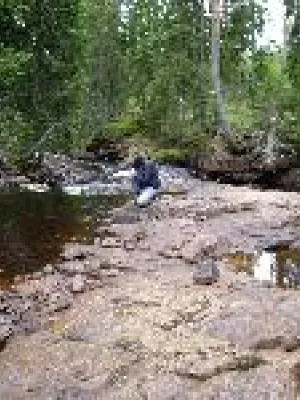
Sanna Alwmark
Postdoctoral fellow

Diverse Lava Flow Morphologies in the Stratigraphy of the Jezero Crater Floor
Author
Summary, in English
We present a combined geomorphologic, multispectral, and geochemical analysis of crater floor rocks in Jezero crater based on data obtained by the Mast Camera Zoom and SuperCam instruments onboard the NASA Mars 2020 Perseverance rover. The combined data from this analysis together with the results of a comparative study with geologic sites on Earth allows us to interpret the origins of rocks exposed along the Artuby ridge, a ∼900 m long scarp of lower Máaz formation rocks. The ridge exposes rocks belonging to two morphologically distinct members, Artuby and Rochette, both of which have basaltic composition and are spectrally indistinguishable in our analysis. Artuby rocks consist of morphologically distinct units that alternate over the ridge, bulbous, hummocky, layers with varying thicknesses that in places appear to have flowed over underlying strata, and sub-planar thinner laterally continuous layers with variable friability. The Rochette member has a massive appearance with pronounced pitting and sub-horizontal partings. Our findings are most consistent with a primary igneous emplacement as lava flows, through multiple eruptions, and we propose that the thin layers result either from preferential weathering, interbedded ash/tephra layers, ʻaʻā clinker layers, or aeolian deposition. Our analyses provide essential geologic context for the Máaz formation samples that will be returned to Earth and highlight the diversity and complexity of geologic processes on Mars not visible from orbit.
Department/s
- Lithosphere and Biosphere Science
Publishing year
2023
Language
English
Publication/Series
Journal of Geophysical Research: Planets
Volume
128
Issue
7
Document type
Journal article
Publisher
Wiley-Blackwell
Topic
- Geology
Keywords
- Artuby
- Jezero crater
- Lava
- Maaz formation
- Mars 2020 Perseverance
Status
Published
ISBN/ISSN/Other
- ISSN: 2169-9097

